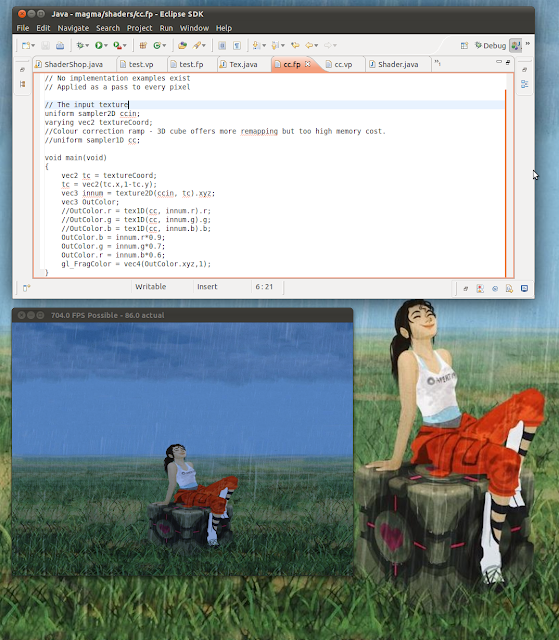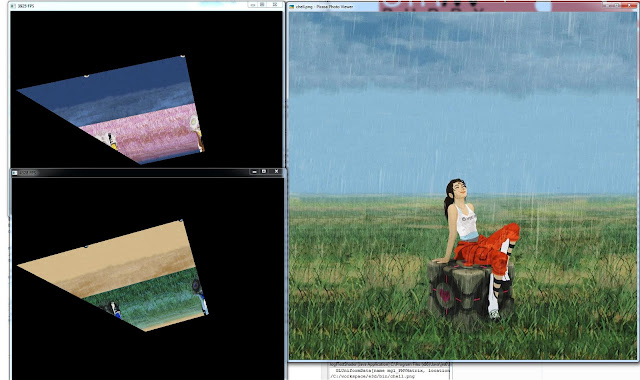 |
| I do Linux. It's a thing now. |
This is going to be another short post, I'm afraid. Current progress towards the game is shown above - I've set it up to do real-time colour toning of scenes. It's currently just set to turn Red and Green down a lot, and Blue down slightly, and then switch the Red and Blue channels around (fixing the odd colouring issue I was having at the time of last week's post). It's also rendering to an off-screen buffer at the same time - which means that the in-game content could all be treated in the same way, not just a raw image as shown here.
For anyone interested, the fragment shader code itself is shown. It really isn't that bad, actually. The code that goes with it (feeding it the data points, textures, etc) is horrific at first sight though. Finer-grain control over colours will be possible, when I write some code to handle one-dimensional textures (multiplying by 0.9, 0,7 and 0.6 were really just to test the concept).
The switch to Linux is an interesting one - I had previously done so on my laptop whilst "revising" - but now it's on my desktop, and it's permanent. On the whole I love the OS - everything is free, without any hassle - installing programs is as easy as typing its name, and pressing "Install". Programming is far easier than under Windows - the entire O/S feels more geared towards it. Even advanced changes only require a couple of lines of text. I'll only cave in and install Windows 7 when my craving to play Portal 2 gets too great, or when I discover that there's no fix for a bug I have with it. (The choice to use a Portal-related texture as my test image suggests I'm not going to last too long...) The only real barriers against wide adoption is the lack of apps like Photoshop, After Effects, and a large library of decent games, the perceived increase in complexity (no steeper than Windows - just not what people are used to), and maybe the self-imposed "free software" barriers (again, not a problem to me - technically formats like MP3 and DVD are licensed, and drivers without source code available throw up a "non-free" warning). That's how my experience of it as my "Main O/S" has been, anyway.
Linux is the one responsible for destroying the performance - it's not actually that slow.
Charlie



